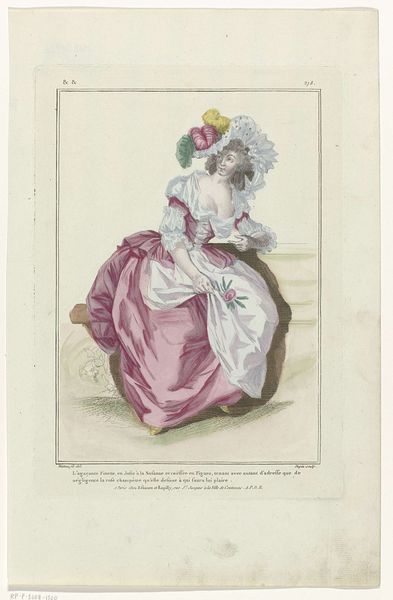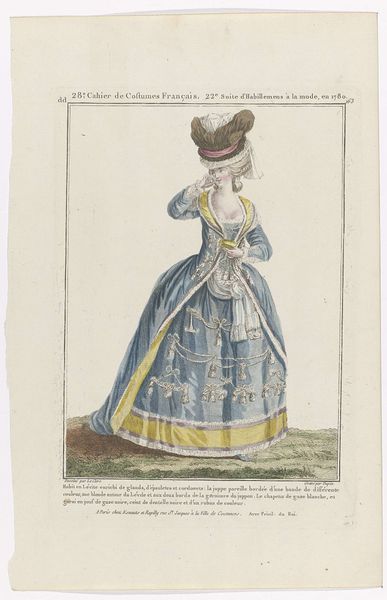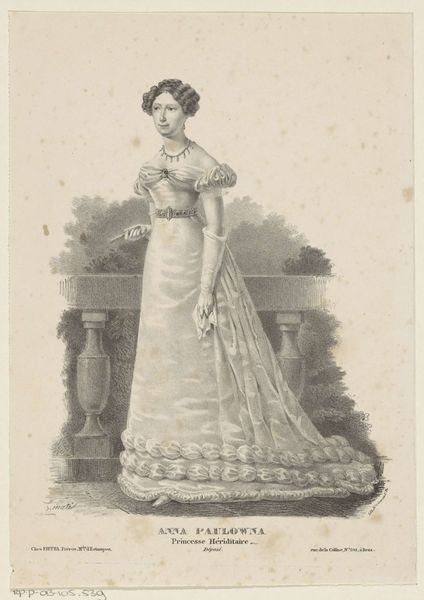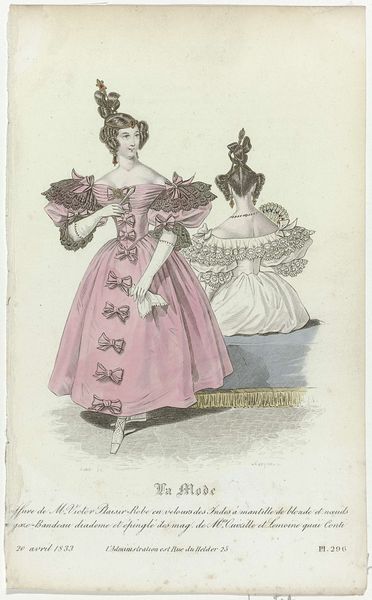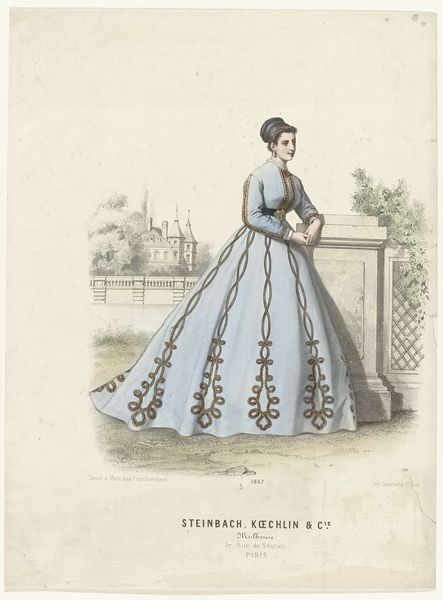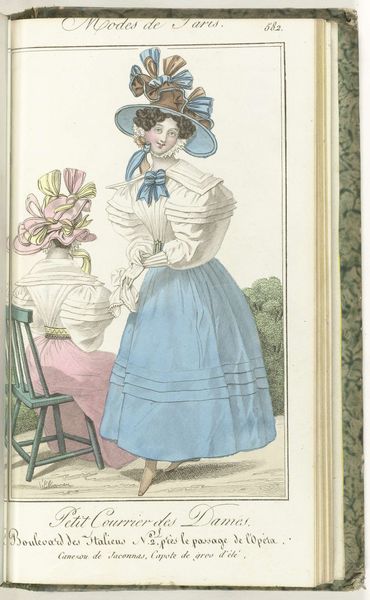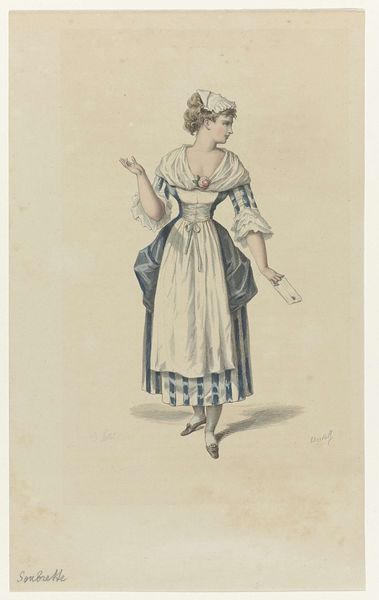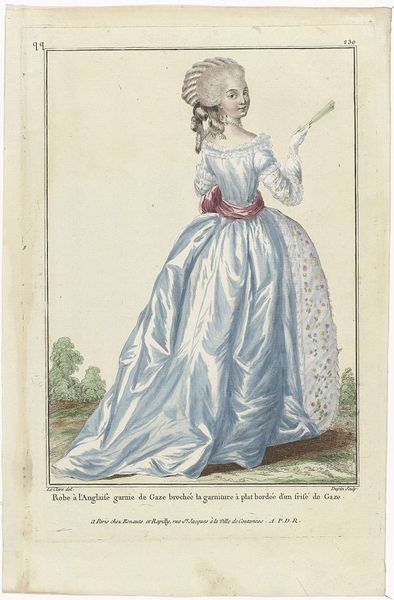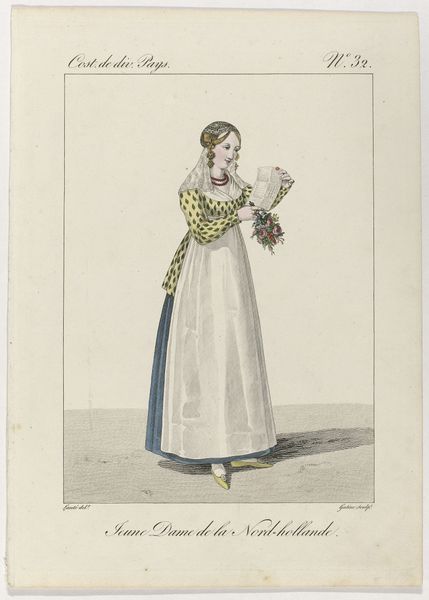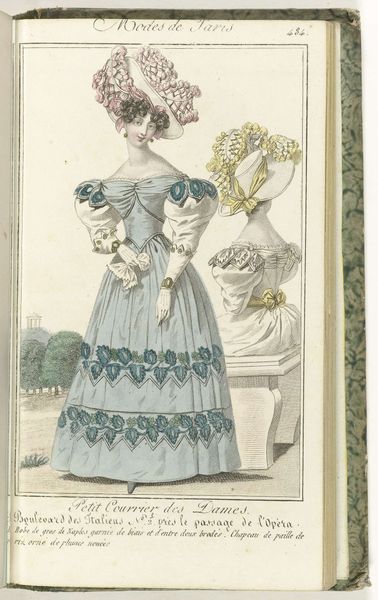
Dimensions: height 297 mm, width 227 mm
Copyright: Rijks Museum: Open Domain
This is 'Robe Caroline', made in 1866 by F. Appel for Dollfus Mieg & Cie. The gown is strikingly decorated with paisley motifs along the hem, symbols rich in historical and cultural meaning. The paisley, a curved, tear-drop shape, can be traced back to ancient Mesopotamia, where it symbolized fertility and the date palm. Moving through the Silk Road, it became a prominent feature in Persian textiles, representing life and eternity. By the 18th and 19th centuries, the British East India Company introduced these patterns to Europe, sparking a fashion craze. Yet, this exotic allure veils a history of colonialism and cultural appropriation. Consider how symbols transform across time and space; the paisley, once a potent emblem of life, became a mere fashion statement. These shifts reveal how collective memory and desire intertwine, shaping our perception of the world around us. The paisley continues to evolve, resurfacing in contemporary art and fashion.
Comments
No comments
Be the first to comment and join the conversation on the ultimate creative platform.
